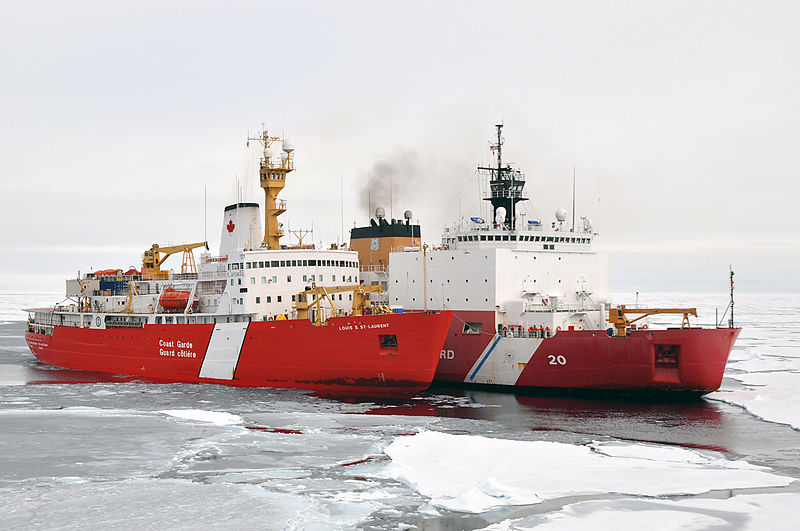
 Hellenic Shipping News reports Germany and Iceland are working together on a port for a new arctic shipping route. The port’s harbor is planned to be located in Finnafjörður on the North-eastern point of Iceland.
Hellenic Shipping News reports Germany and Iceland are working together on a port for a new arctic shipping route. The port’s harbor is planned to be located in Finnafjörður on the North-eastern point of Iceland.
Arctic shipping is becoming more and more feasible as the amount of ice in the Arctic Ocean is shrinking. The increasing possibilities for arctic shipping look to have a huge impact on the international shipping industry.
With their cooperative move, Iceland and Germany are showing themselves to be players in the development of Arctic shipping.
This move by Iceland and Germany could also be very big for the role of the United States in Arctic shipping. But we’ll get back to that.
Preparations for construction of a large, deep-water harbor for international Arctic shipping and petroleum activity have already begun as the German company Bremenports, Icelandic authorities, and the Icelandic engineering company Elfa have completed an agreement on a feasibility study, according to the Hellenic article.
“Safe and sustainable shipping in the Arctic needs concrete projects, this is one of them,” [Robert Howe, Managing Director of Bremenports] said.
…
Bremenports is investing ISK 450 million (€2.2 million) in the preparations, website Islandsbloggen writes.
The port will have three main purposes: a base port for oil and gas operations in the Arctic, a hub port for trans-Arctic shipping, and a service port for both offshore petroleum activity and Arctic shipping. The plans for the port include LNG bunkering facilities and a search and rescue base.
…
“This fjord is very suitable for safe shipping infrastructure in the Arctic”, Howe said. The North-eastern shores of Iceland are ideal for a port for shipping along the Transpolar Sea Route, a future Arctic shipping lane running from the Atlantic Ocean to the Pacific Ocean across the center of the Arctic Ocean. Due to the increasing decline of Arctic sea ice extent, the route is slated to emerge as the predominant Arctic shipping route by 2030.
In contrast to the Northern Sea Route and North-West Passage, the Transpolar Sea Route largely avoids the territorial waters of Arctic states and lies in international high seas.
So why might this be so beneficial for U.S. Arctic shipping? The Hellenic article ends with this:
New ice-free and safe hubs are needed at both ends of this route. They could be located in Alaska and Iceland, the developers believe.
With Alaska being a logical hub at the end of the route and the route largely avoiding territorial waters of other countries, the U.S. would be in prime position to take advantage of the route.
China and Russia have been working hard to take advantage of Arctic shipping. The aspirations of these countries to control and monetize Arctic routes are clear. Between Russia using their geographical advantage to claim control of the entire “Northern Sea Route” portion of the Northeast Passage and China already cutting through ice to send commercial ships through the Arctic, the U.S. could quickly be on the outside looking in.
Shorter shipping routes and large economic advantages lie within Arctic shipping. There is no way that the United States wants to get left out in the cold when it comes to Arctic shipping. Germany and Iceland’s recent moves in Arctic shipping just might be the best entryway for the U.S. to get into the game.
Since Arctic shipping could mean big things, including less expensive freight rates for shippers, we’ve been keeping an eye on the subject here at Universal Cargo.
If you’re interested in reading more on the topic, you can check out the below links to previous blogs that get into Arctic shipping:
![]()
Source: UC Blog
Discover more from reviewer4you.com
Subscribe to get the latest posts to your email.






